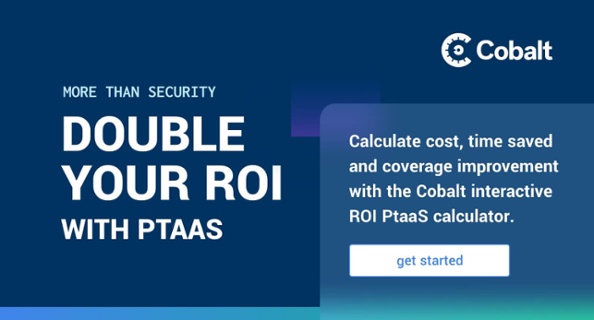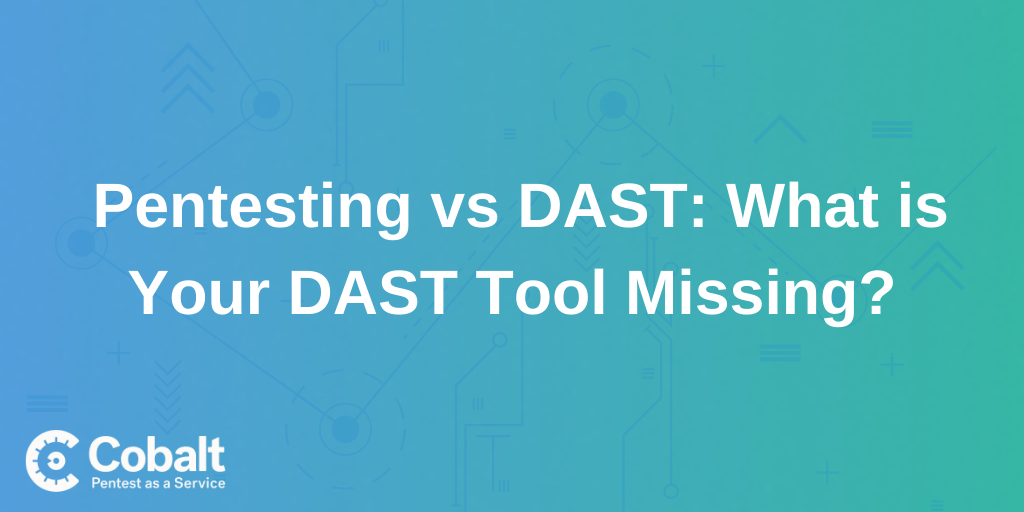Modern cybersecurity requires testing applications, systems, and networks to detect vulnerabilities and threats. In order to improve your system’s resilience to malicious hacking attempts, different testing methods exist.
To properly secure your digital assets, businesses need a proper understanding of possible vulnerabilities. Buisnesses use a variety of different security practices help to illuminate these vulnerabilities with tactics ranging from manual penetration testing, bug bounties, security scanners and Pentest as a Service (PtaaS) platforms.
When looking at pentesting vs bug bounty, each of these different approaches present unique benefits and drawbacks. Considering the different pros and cons of different approaches helps to empower your security program to be more effective. At the end of the day, regardless of the method used, cybersecurity is crucial.
This article takes you through the different methods used to find vulnerabilities and help your team choose the best approach for your business by weighing the pros and cons of each approach.
With that in mind, let’s dive in and take a closer look at these different approaches.
What are Security Scanners?
Bug scanners are software tools used to search and report vulnerabilities in systems, networks, and software automatically. They uncover the threats so businesses can proactively remediate the detected bugs. While these tools automatically crawl through systems, checking for possible threats, they often miss the human creativity involved in cyber breaches.
While scanners are quick and easy to initially set up for launching scans, without human configuration and tuning, they can be very noisy and provide too many false positives. Automated scanners also have shortcomings identifying more complex business logic flaws and vulnerabilities that have multi-step operations.
With a security scan, you can scan your systems and network for a variety of weaknesses. These cybersecurity scanners identify many different vulnerable versions of applications and help remediate the vulnerabilities according to their risk levels.
| Advantages of Security Scanners | Disadvantages of Security Scanners |
|---|---|
| Automatic scanning | Won’t discover every vulnerability |
| Time & cost savings advantage | Won’t discover every vulnerability |
| Time & cost savings advantage | Higher rate of false positives |
| Explicitly required in many compliance frameworks | Not inclusive of all security compliance requirements |
| Multiple tools are available in the marketplace | Some scanners do not fit well into larger security ecosystems |
What are Bug Bounties?
Bug bounties offer companies another approach to finding vulnerabilities. This approach uses legal hacking attempts through an open community of bug hunters and pentesters, where testers earn their compensation based upon the impact of the discovered vulnerability.
With bug bounties, organizations leverage a pool of pentesters to detect more sophisticated vulnerabilities. Bug bounties also open the opportunity for businesses to have a testing program open for a longer period of time since testers only receive payment after reporting an accepted vulnerability. After detecting flaws, the testers submit reports and proof of concept (POC) to receive their bounty payment.
| Advantages of Bug Bounty | Disadvantages of Bug Bounty |
|---|---|
| Attracts numerous hackers | Duplicate report potential |
| Multiple testers provide different opinions | Attracts amateurs who might not understand your business model |
| Businesses only pay for discovered vulnerabilities | Multiple bugs lead to high costs |
| More flexibility on scope and timing | No certainty testers will find flaws |
What is Manual Penetration Testing?
In manual security testing, security experts perform scheduled reviews on applications, systems, and networks to uncover vulnerabilities. During this traditional approach to pentesting, security experts collect application and system data using tools such as source codes and perform tests to identify security weaknesses.
A key component of manual testing comes from the human aspect which uses logic and ingenuity to discover system flaws or vulnerabilities related to business processes. With in-depth inspection, the testers often detect issues that appear during development but were missed by scanners.
| Advantages of Manual Testing | Disadvantages of Manual Testing |
|---|---|
| Human creativity allows for intelligent testing | Longer preparation, scoping & testing times |
| More in-depth than automatic solutions | More expensive |
| Dedicated testing team | Limited scope |
| Eliminates False Positives | Slower report turnaround |
Today, many businesses use this traditional approach to pentesting. Yet, modern pentesting programs such as Penetration testing as a Service (PtaaS) have started to erode their usage and aim to revolutionize traditional pentesting. While bug bounties, security scanners, and manual testers are still relevant, modern approaches like PtaaS offer cutting-edge pentesting by combining the benefits of these different approaches into an easy-to-use platform solution.
Penetration Testing as a Service (PtaaS) Explained

PtaaS, a platform approach, offers the benefits of a manual penetration testing service in a unified platform with the benefits of integrations and automations. Since security threats continue to get increasingly more sophisticated, PtaaS offers a faster and more thorough process for security testing and vulnerability discovery.
Unlike other traditional testing approaches that evaluate your company’s technical infrastructure after months of planning, PtaaS can be scheduled with more flexibility and ease. Furthermore, Cobalt offers free retesting for vulnerabilities discovered during the use of our PtaaS platform. All of which aims to create an environment where even the smallest threats can be dealt with in real-time and based upon their potential business impact.
A comprehensive PtaaS platform includes collaboration between developers and testers, real-time reporting, system integrations for remediation, and faster testing turnaround times. PtaaS providers leverage a wide range of tools and expert pentesters to ensure different types of security testing is covered. The goal of PtaaS is to build a vulnerability management environment that can detect and thwart security threats faster and easier than traditional testing.
| Advantages of PtaaS | Disadvantages of PtaaS |
|---|---|
| Highly-scalable pentesting method with integrations to developer toolsets | Test covers a single moment in time |
| Real-time pentesting with collaboration between testers and developers | More expensive than automatic scanners |
| Faster detection, remediation, and reporting | Single team of experienced pentesters instead of an open community |
| Free retesting after remediation |
Penetration Testing as a Service (PtaaS) vs Traditional Pentesting, Bug bounties or Security scanners
Companies have different approaches to security testing. While some companies still do traditional pentesting, many modern businesses realize the value of a more systemic approach and continue to move towards PtaaS.
Let’s take a closer look at the factors that differentiate PtaaS from traditional testing, bug bounties, and scanners.
Expertise
In PtaaS, many of the processes benefit from automation while still leveraging the ability of human testers to uncover bugs. Pentesters utilize SaaS products to monitor systems and applications, submit bugs in real time, benefit from system integration, and dynamically generate pentesting reports.
On the other hand, while bounty testing is performed by individuals, these programs allow anybody to register for the program. While bug bounties mainly attract professionals, amateurs can find their way in. This leads to the reporting of identical or even false-positive vulnerabilities.
Finally, the human aspect of PtaaS uncovers more potential vulnerabilities than scanners discover. Security scanners aren’t 100% accurate, and that gap often leads to undetected threats.
Availability
PtaaS pentesting offers a leaner approach to testing with shorter scheduling times and faster remediation with integrations direct to developer toolsets. This semi-automated process brings together the benefits of human testers, while also incorporating the speed offered by scanning solutions, with threat detection results shared in real-time throughout the pentest.
With a bug bounty program, there is little certainty if specific components have been tested. Businesses could have hundreds of people at once in their bounty program but still, zero vulnerabilities were reported. Businesses cannot coordinate the testers in a bounty program as much as they can with a manual pentest or while using a Pentest as a Service (PtaaS) platform.
Cost
Many companies unknowingly prefer a PtaaS platform since they are faster than traditional testing tools and offer real-time reporting. With a PtaaS pentest program, businesses pay a set fee, which is billed only when testing services occur.
On the other hand, bug bounty programs pay a fee depending on the vulnerabilities detected. The company sets a bounty that attracts ethical hackers. High bounties do attract many hackers, while low bounties may deter them. Bug bounties also don’t offer businesses a precise estimate of testing costs which can make planning for future testing more difficult.
Feedback Loop
A good pentesting program should have a coordinated feedback loop between testers and developers. It should provide feedback so the identified threats can be addressed with consideration to the different business priorities.
PtaaS products have built-in analytics that reports the health of your pentest program. Streamlined, real-time communication improves the efficiency as it eliminates traditional mailing. Dashboard reports help to enhance the vulnerability remediation process.
On the other hand, bug bounty hunters focus on finding bugs so they can earn their pay. This requires companies to filter bounty feedback to find the best vulnerability reports, identify priorities and prioritize remediation tasks.
While Manual testing also can have a great feedback loop as security testers document every action, the process is ad hoc. Furthermore, the reports require manual processing which leads to delays from the time-consuming process of creating manual reports.
Moving Your Pentesting to a PtaaS Provider
Businesses looking to detect threats and vulnerabilities in real-time should consider outsourcing their pentesting program to a PtaaS provider. PtaaS offers cost-effective, more readily available solutions, integrations, and real-time reports. Pentesting as a Service aims to give your business a competitive edge as it leverages the latest tools and technologies in the market. Besides, PtaaS providers offer customized services to meet the demands of your business more closely.
At Cobalt, we provide a PtaaS platform to transform vulnerability management so your business can easily detect threats in real-time. We perform penetration tests on web and mobile applications, APIs, cloud networks, and more.
Our highly-vetted pentester community brings a diverse skillset across various technology infrastructures to your pentest, offering companies a faster and easier-to-use approach to pentesting. With a PtaaS platform, we combine the advanced skill set of human testers with modern software solutions to create a world-class penetration testing experience.
Get in touch with our team of experts for an efficient, scalable pentest program!




















